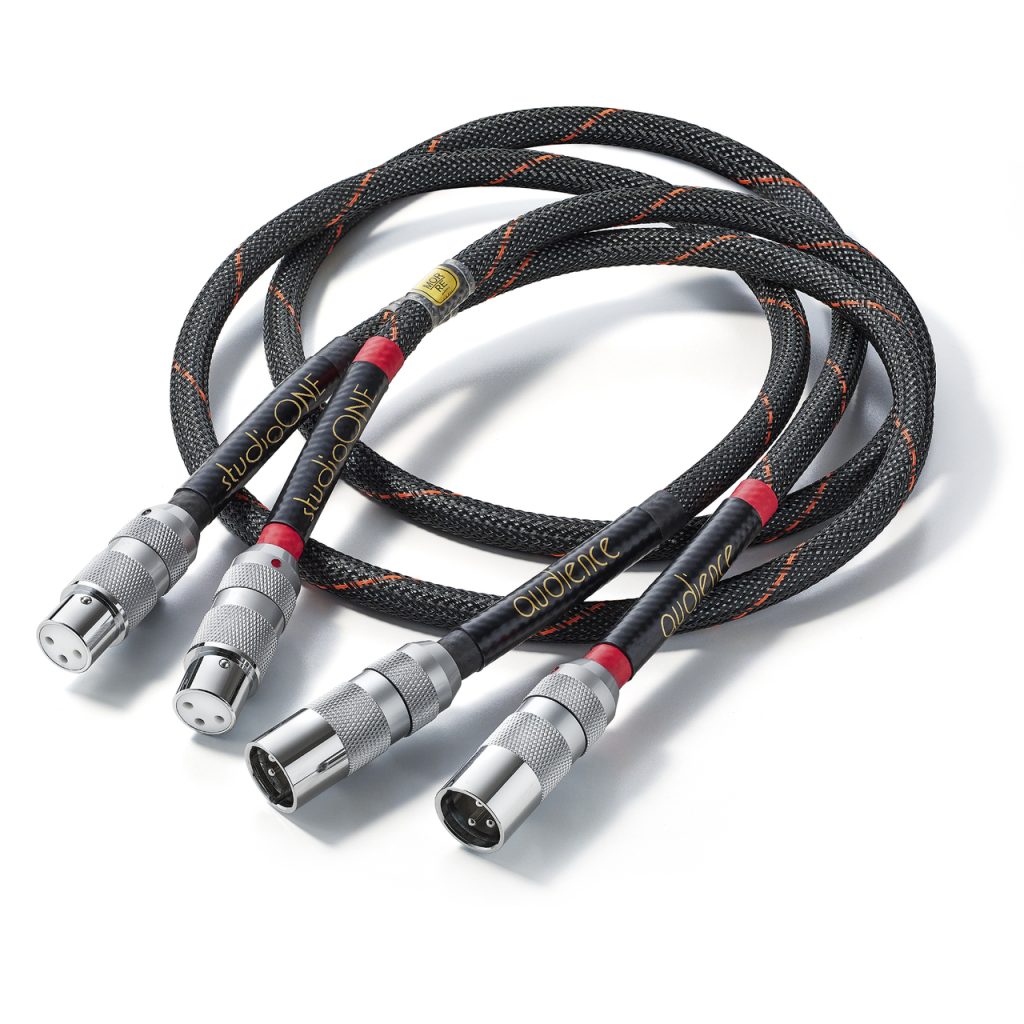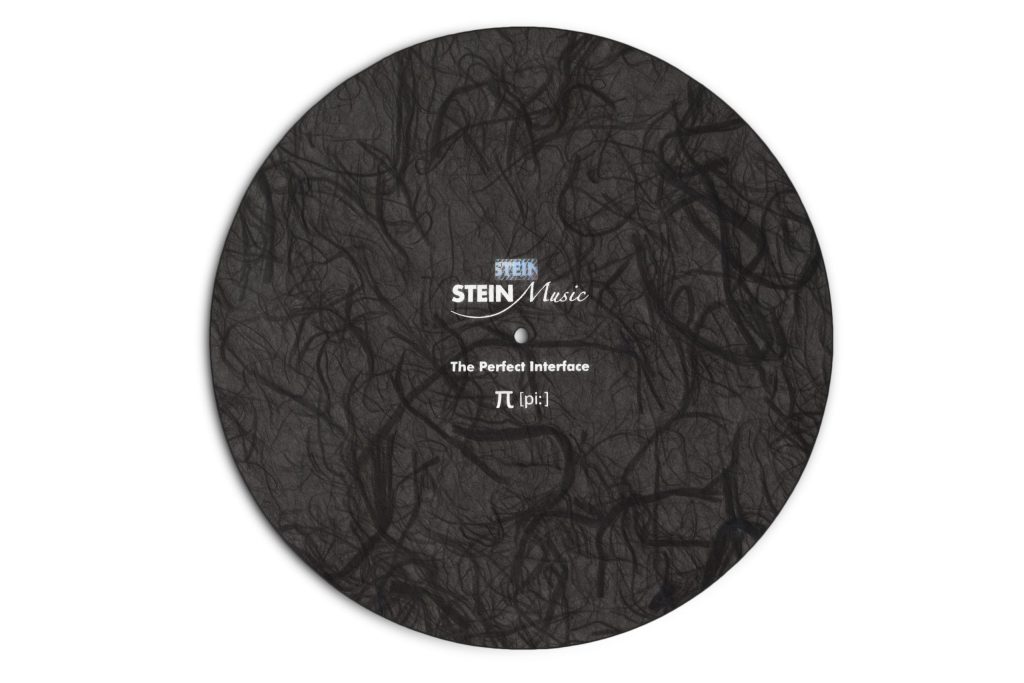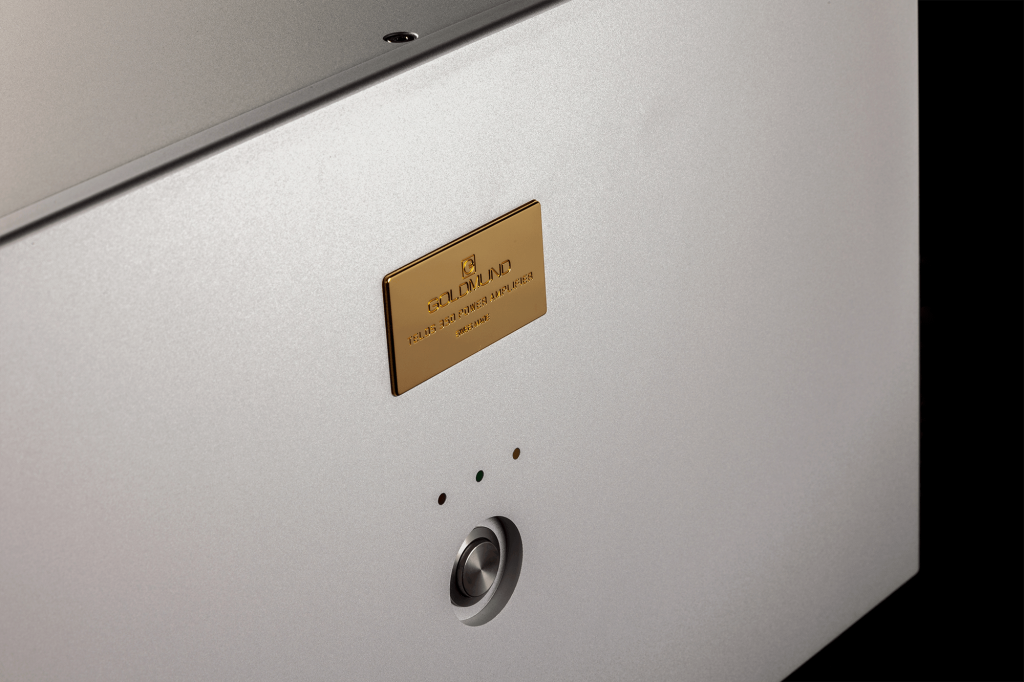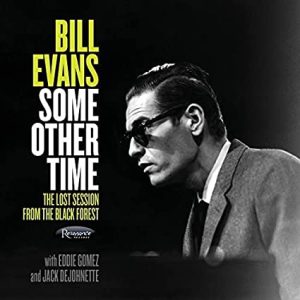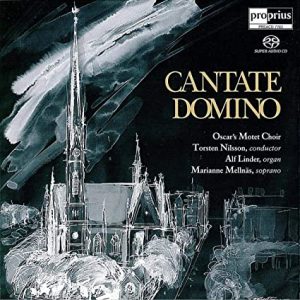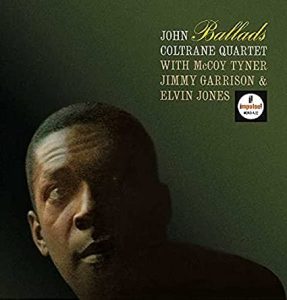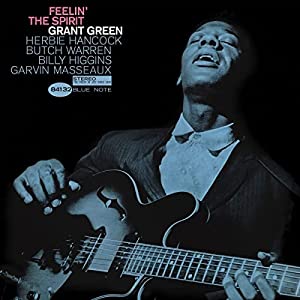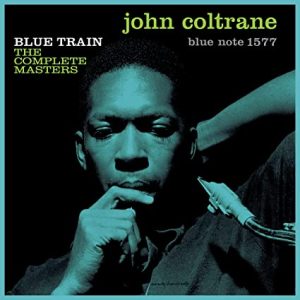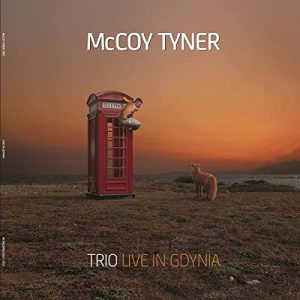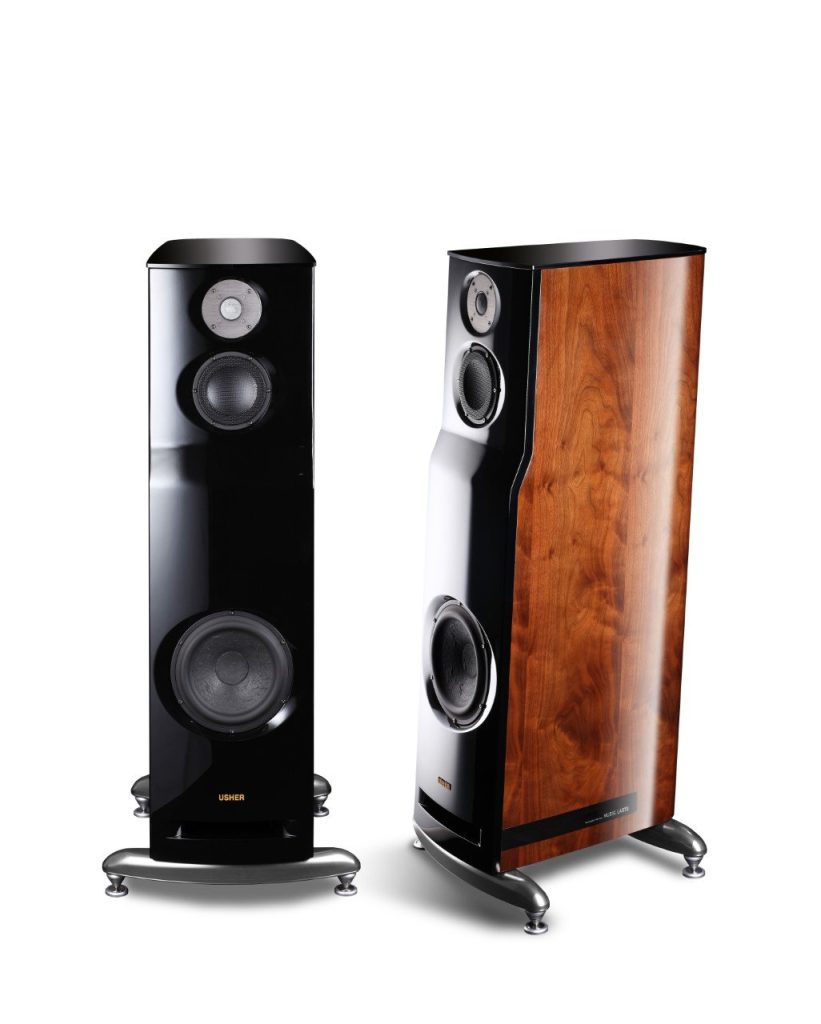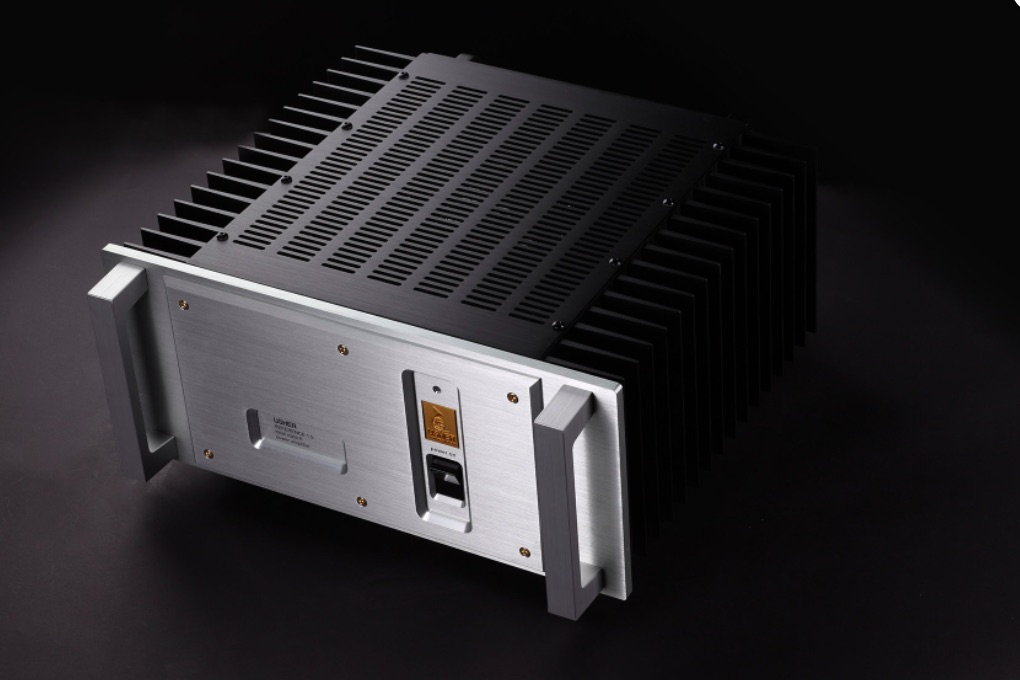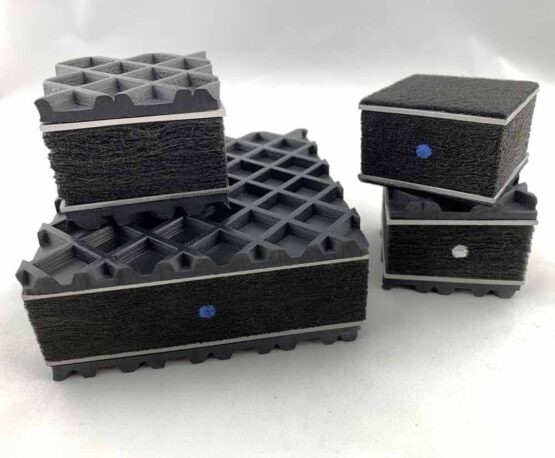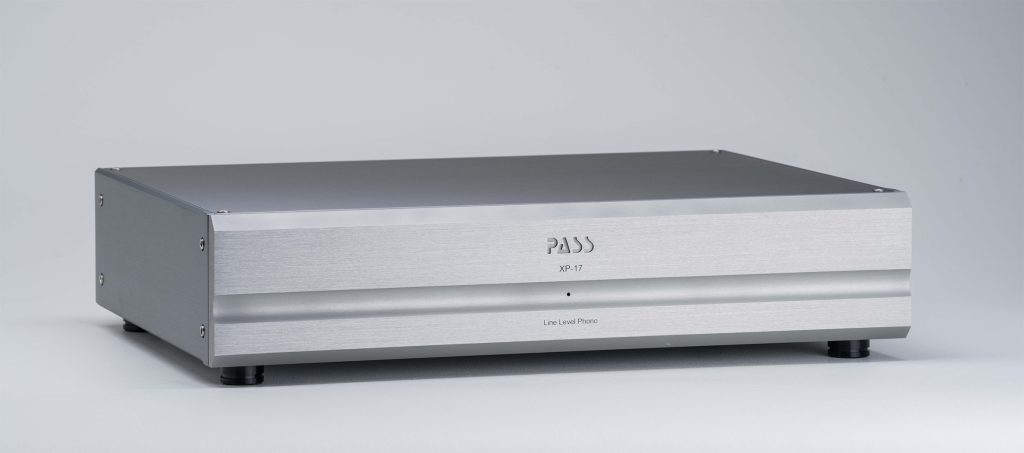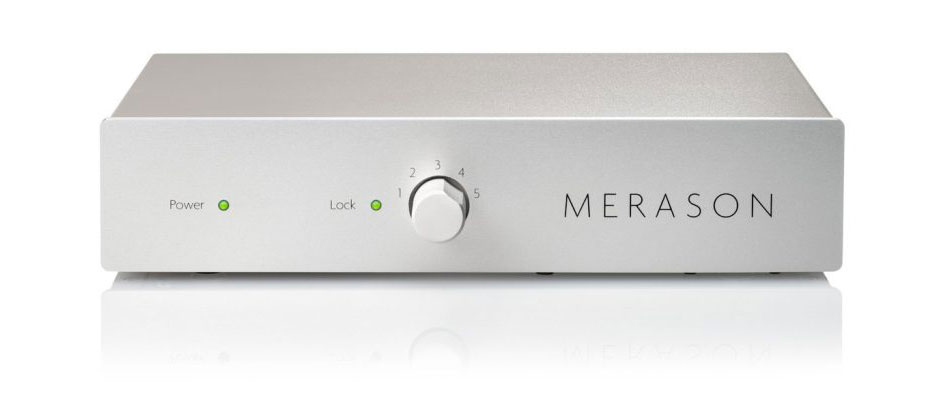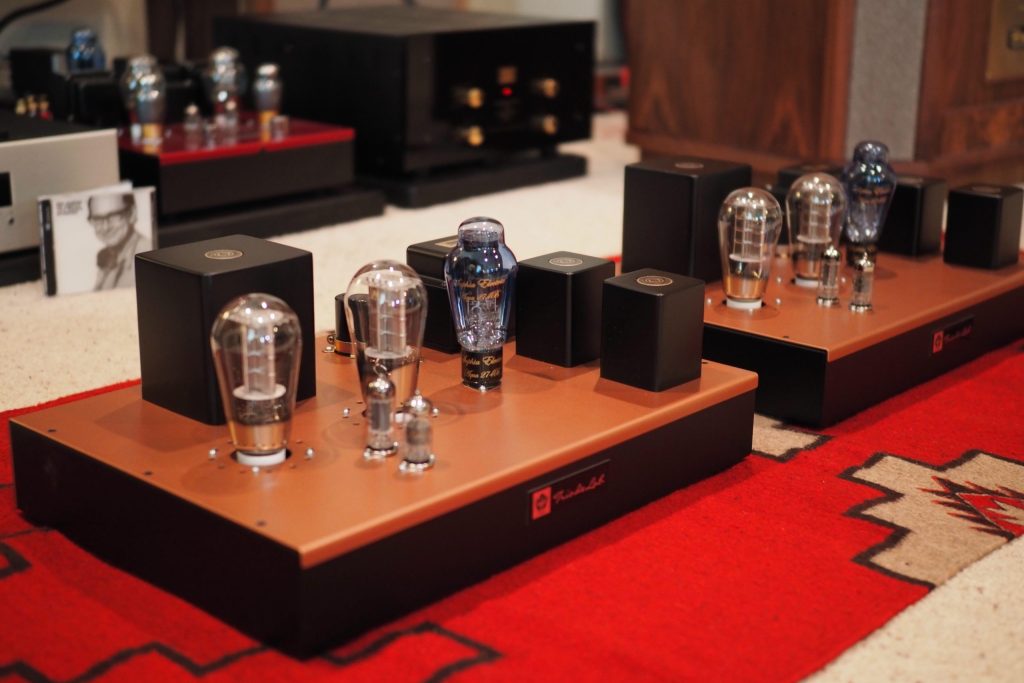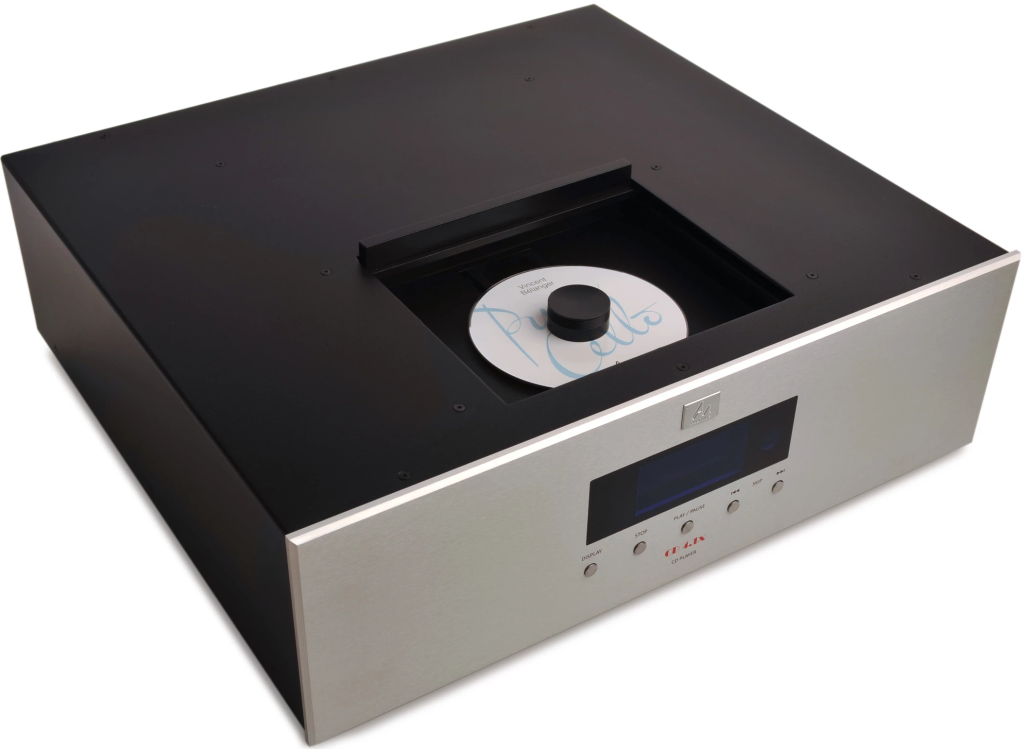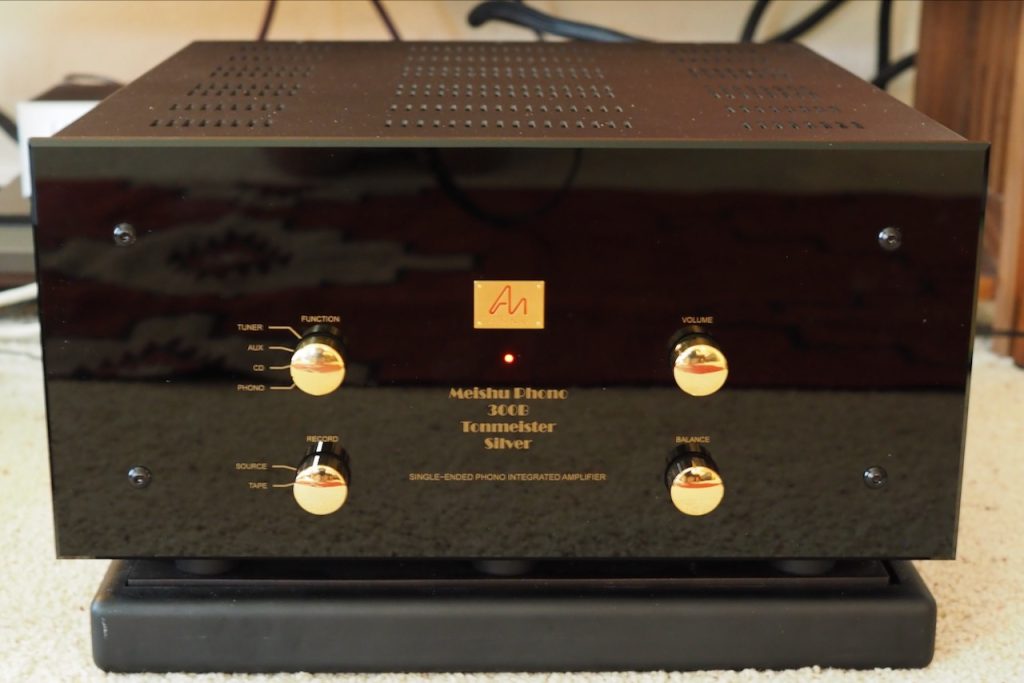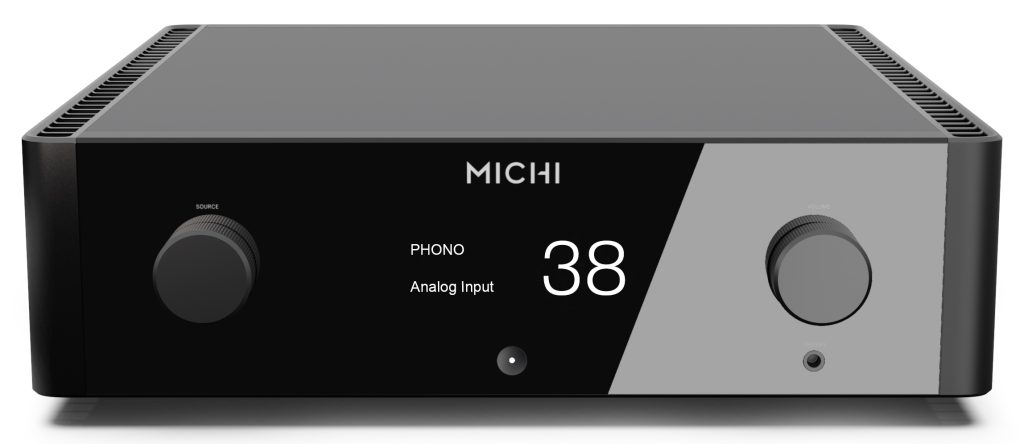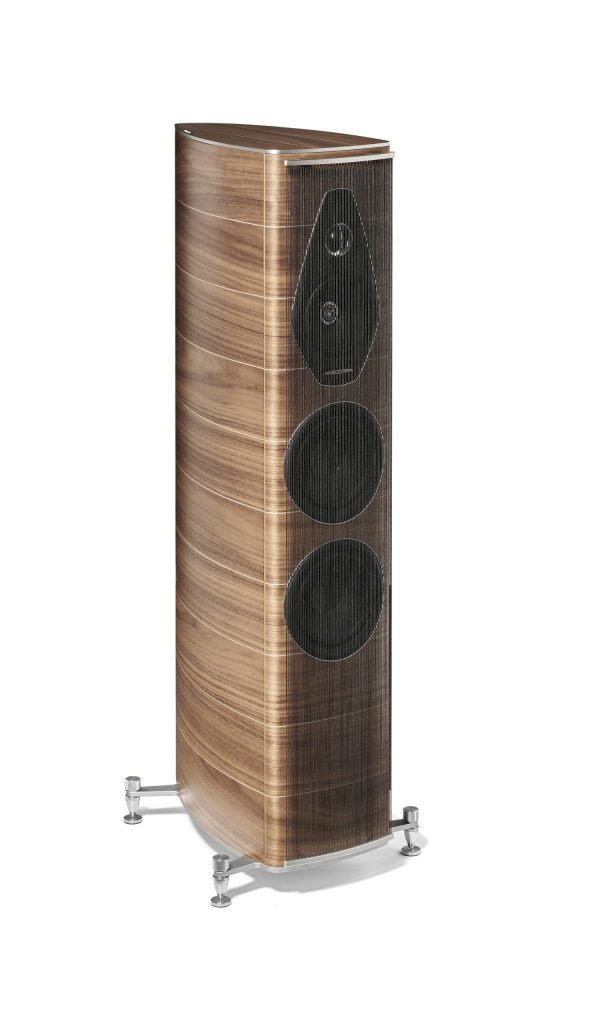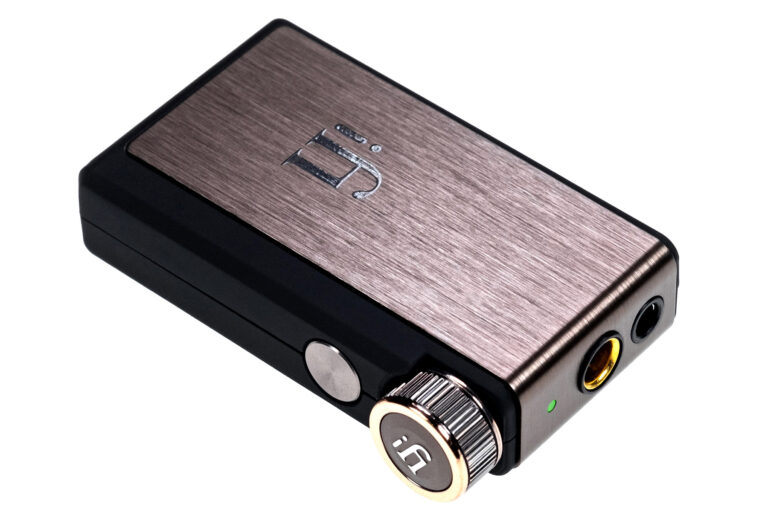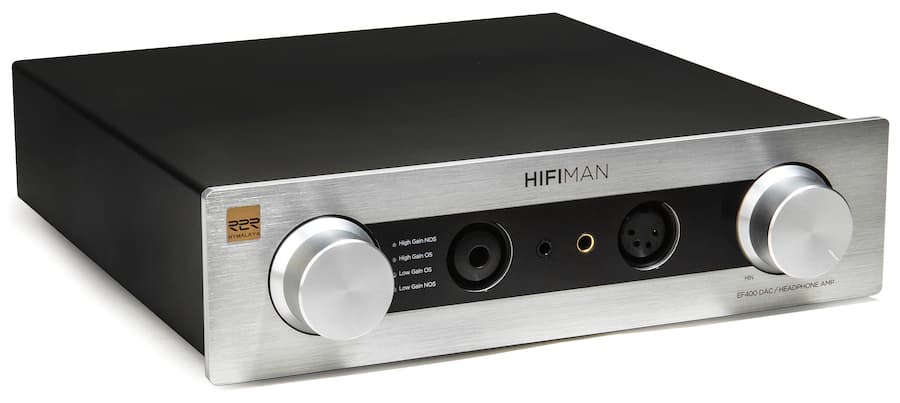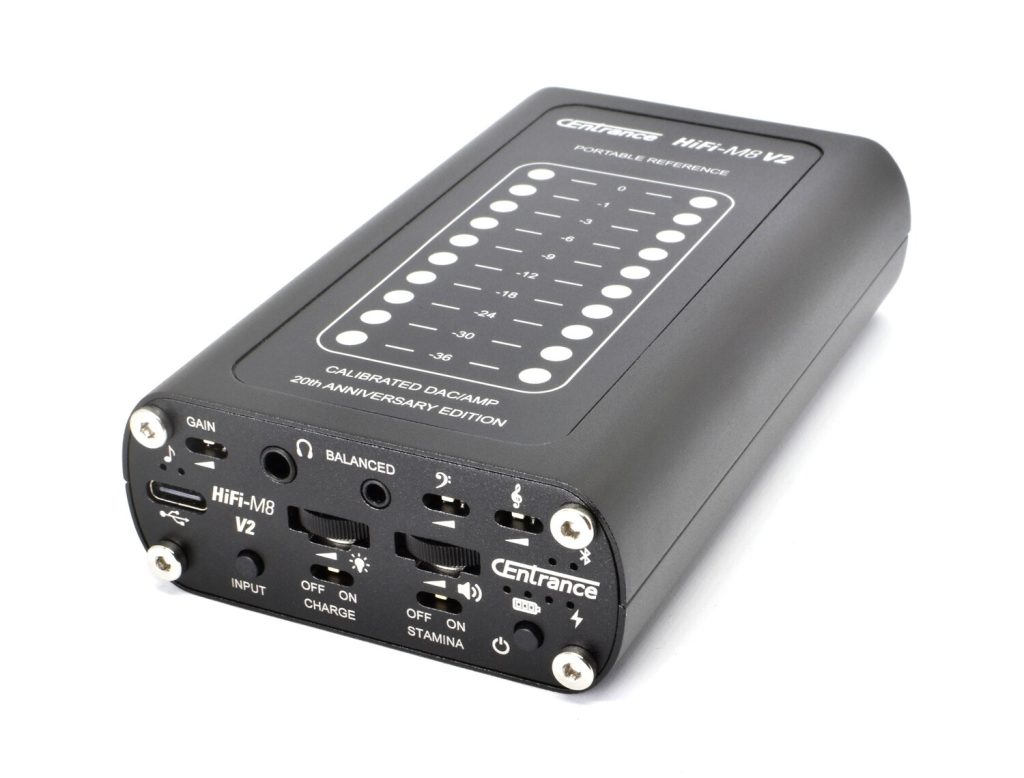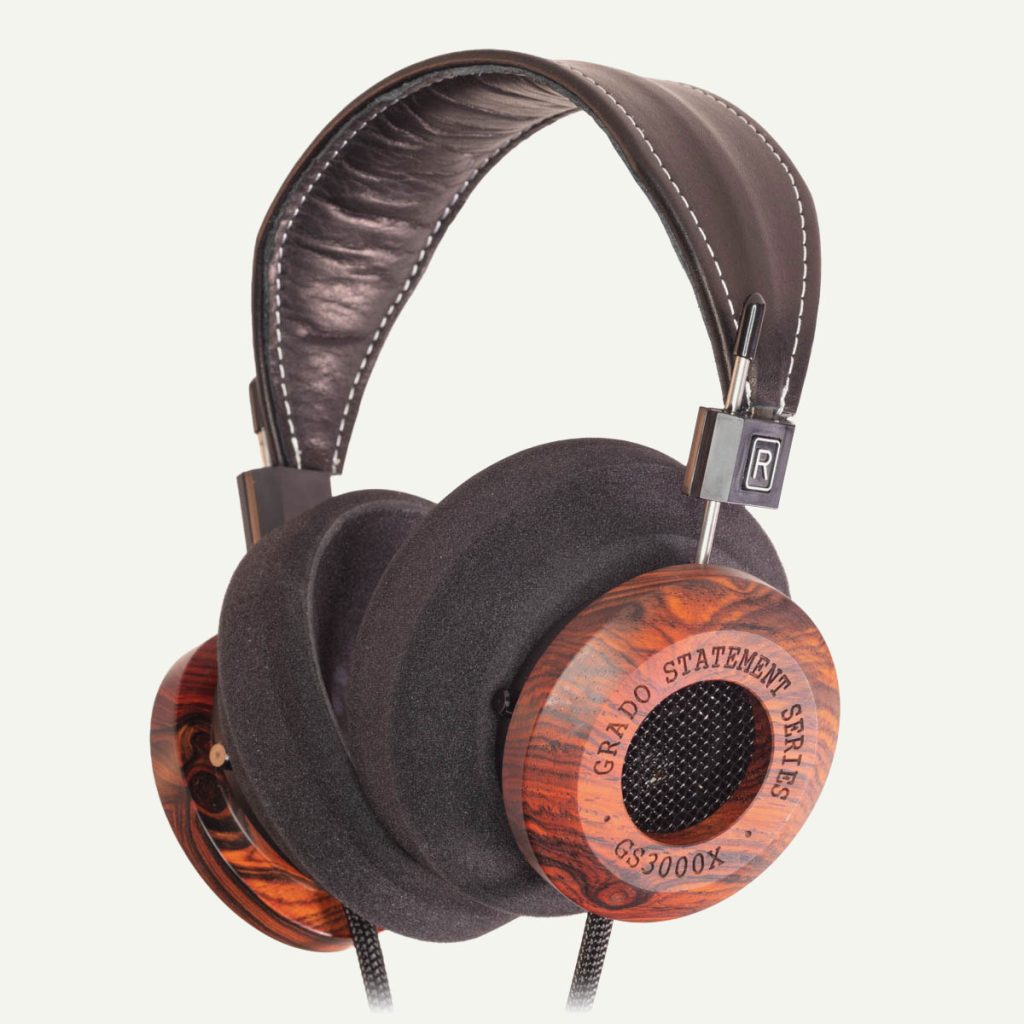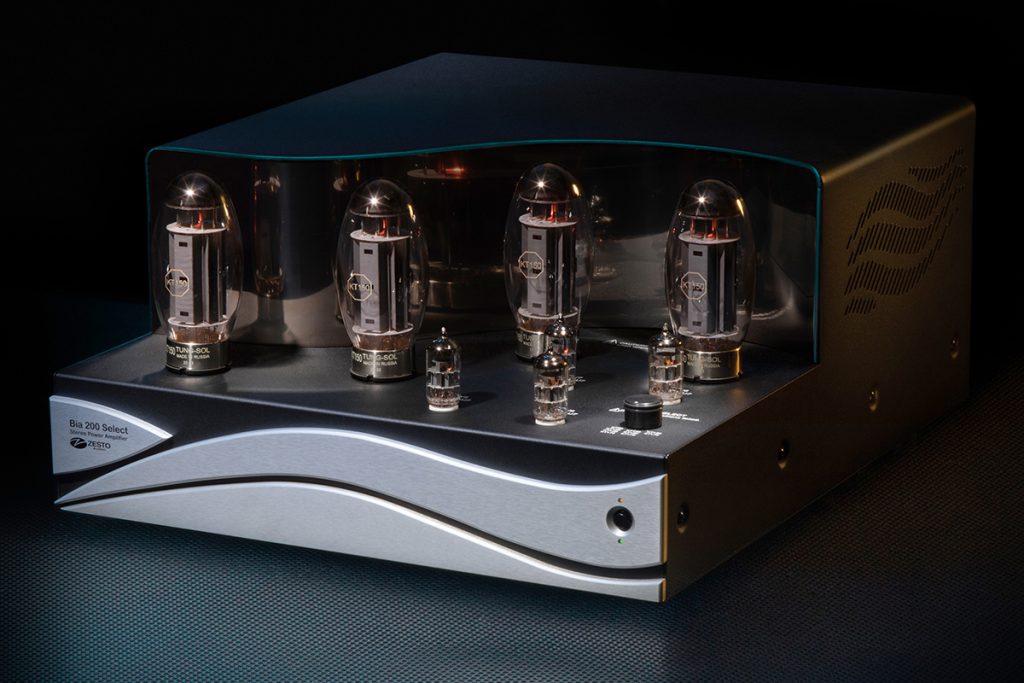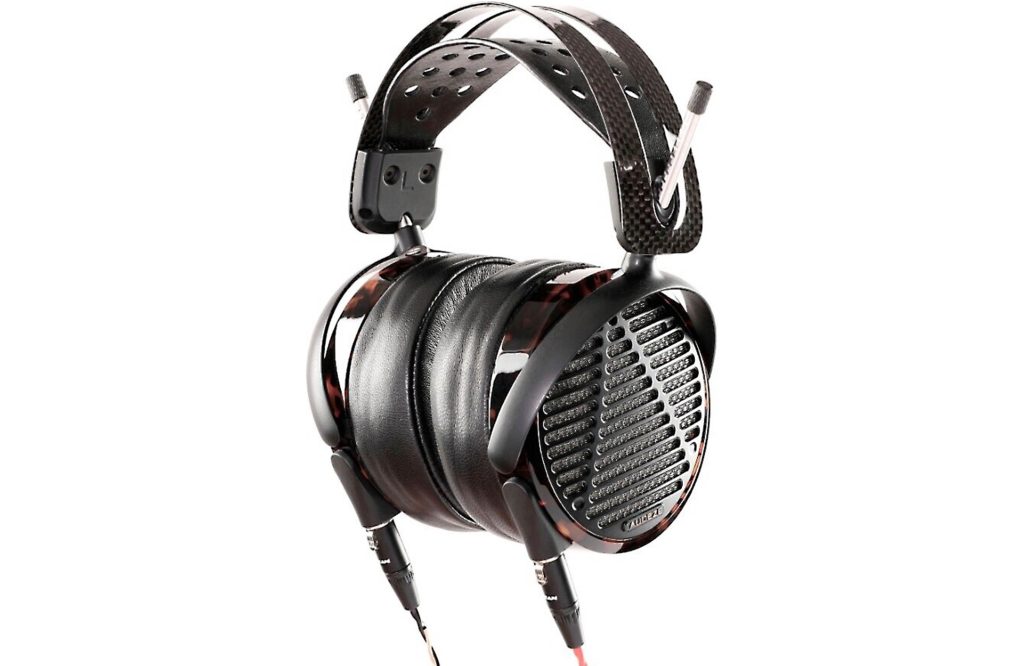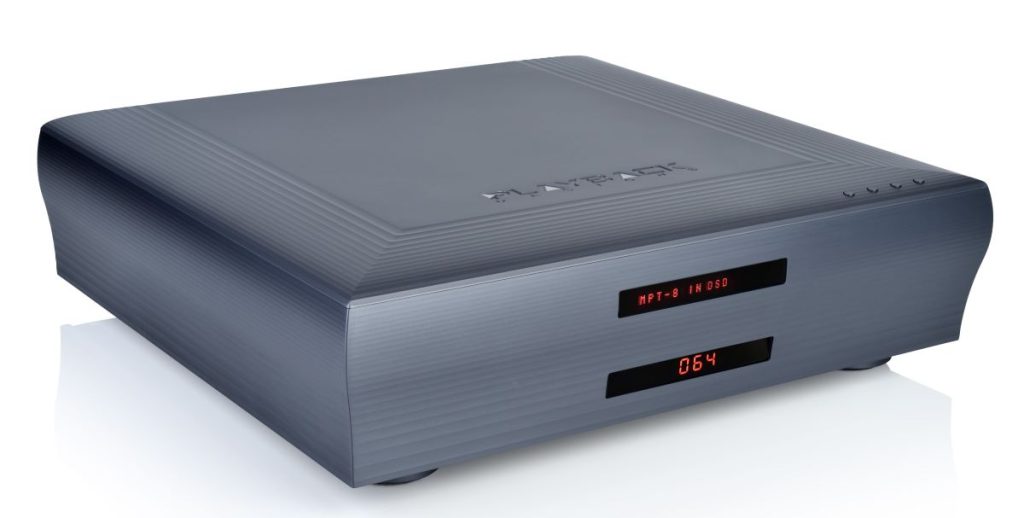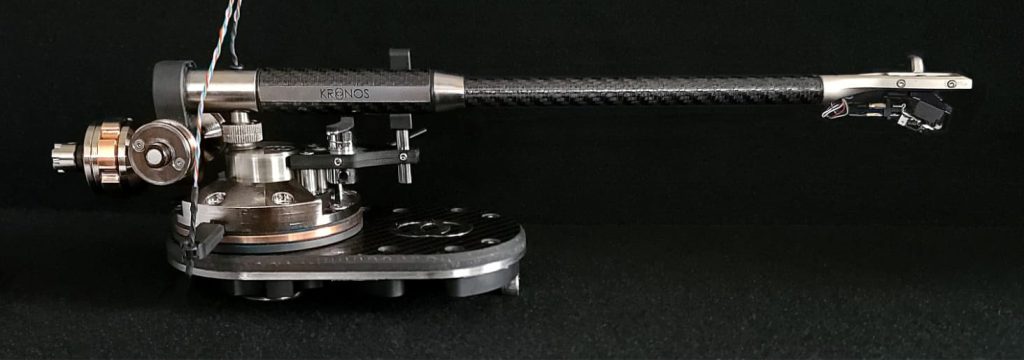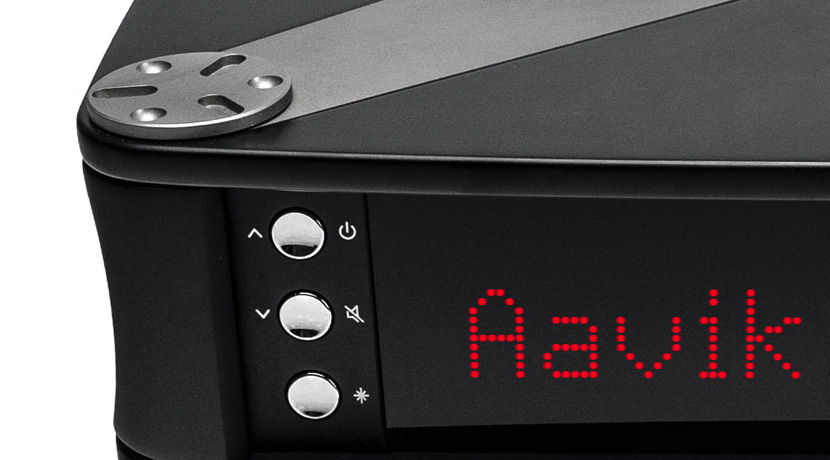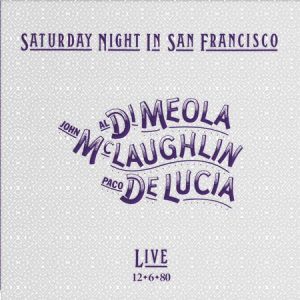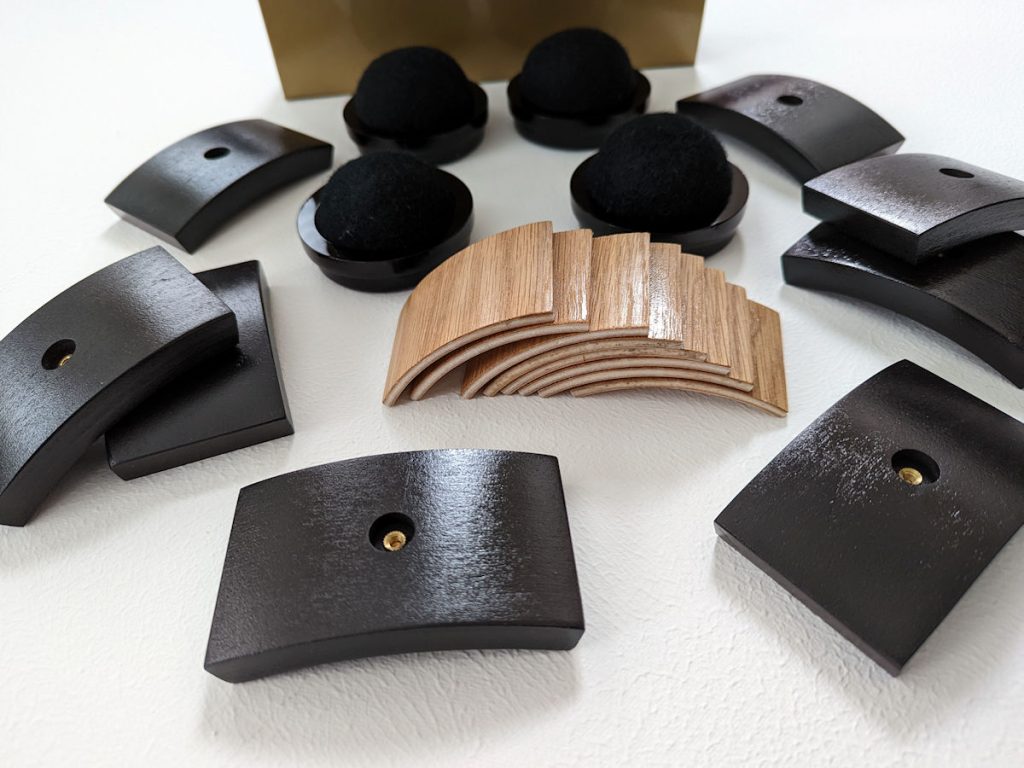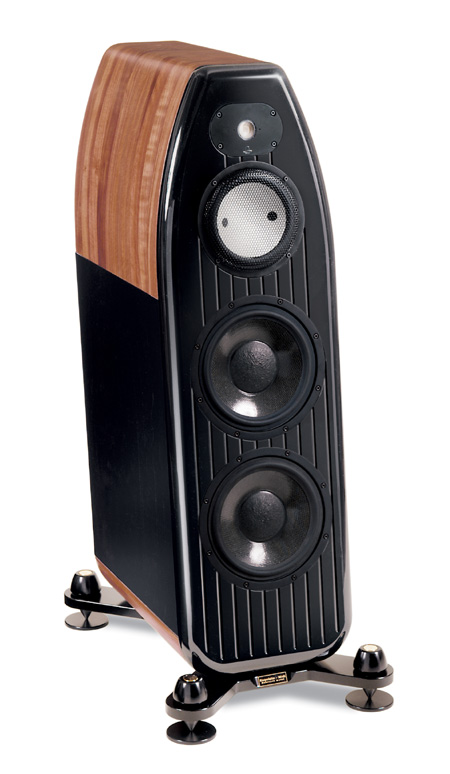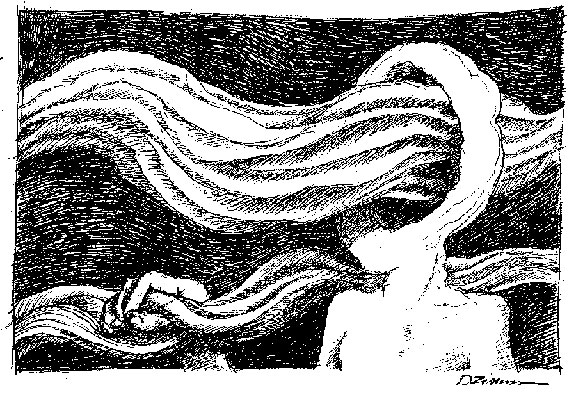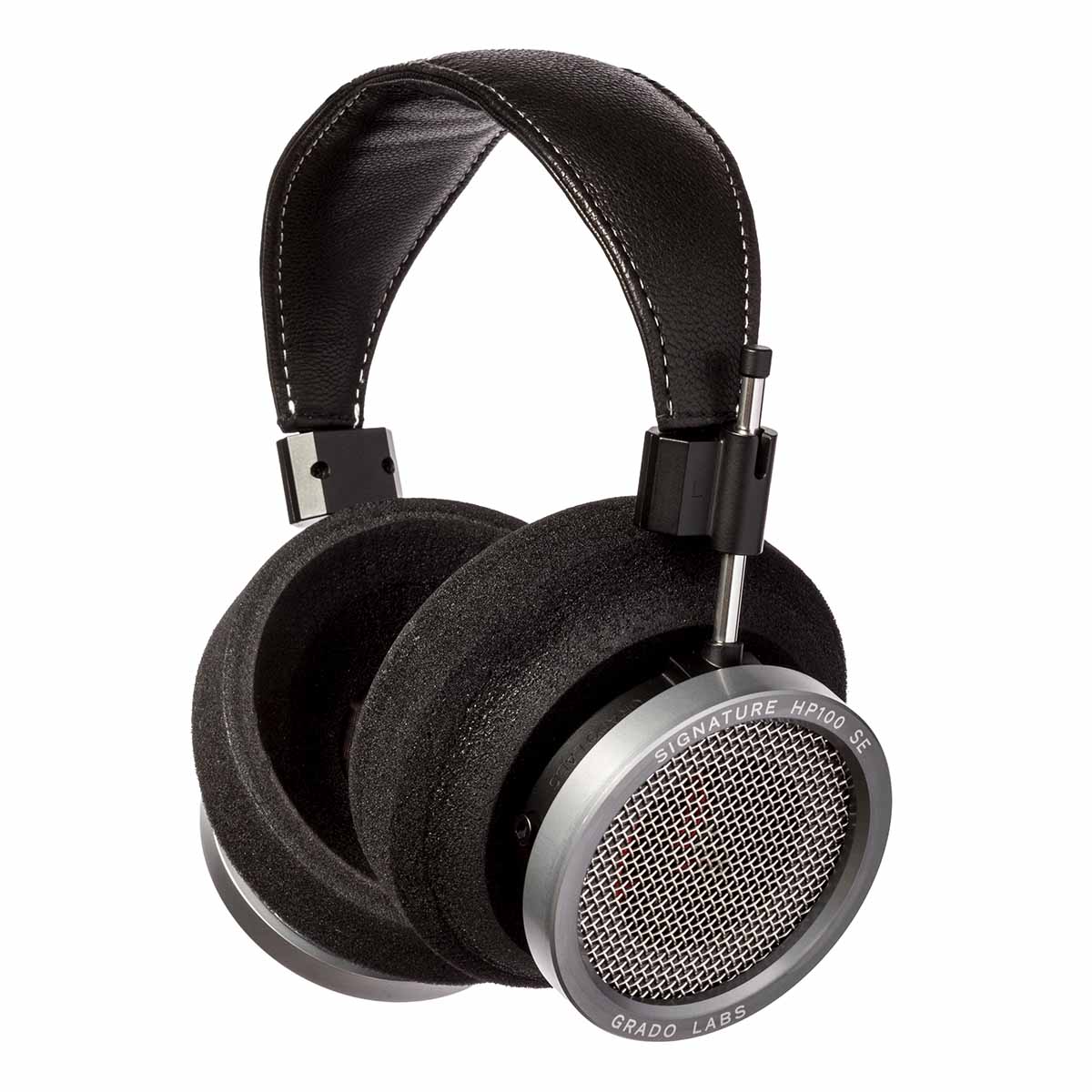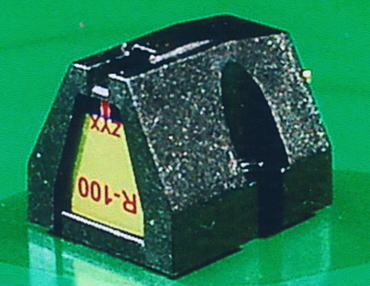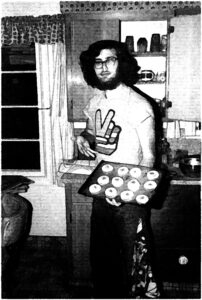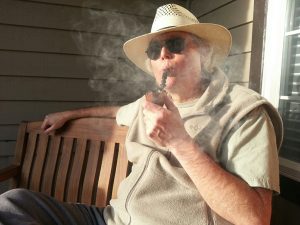Beginning at the end of 2003, PF established its first annual awards for fine audio. The Brutus Award was established for the best that David Robinson and Dave and Carol Clark had heard in their own listening rooms during that year. You can think of it as our equivalent of an "Editors' Choice" award.
The Gizmo Award, on the other hand, was established in memory of our very good audio friend, Harvey "Gizmo" Rosenberg, and is given by David Robinson to the most conspicuous audiomaniac(s) of the year. Only one Gizmo is given per year; some years, no Gizmo is given at all.
The following is an opportunity for our editors and writers to recognize superior merit in the audio arts though their "Writers' Choice Awards." Our writers and reviewers have been given broad leeway to cite excellence in fine audio wherever they find it: products, people, recordings, events, groups, etc., so that our readers can be better informed.
It is our hope that you will find the PF Writers' Choice Awards to be helpful to you in your audio journey.
All the best,
Positive Feedback
John Acton
Studio ONE Interconnect and Speaker Cables, $1900
My Positive Feedback Writer's Choice Award for 2022 goes to Audience's Studio ONE interconnect and speaker cables. No stranger to innovation, Audience AV has taken its celebrated Au24e series of cables, improved upon them greatly with technology borne of the company's flagship frontRow offerings, and re-introduced as the Studio ONE line, all while maintaining the same price point. Utilizing higher-quality oxygen-free copper (OFC) and improved cross-linked polyethylene (XLPE) dielectric in the Studio ONE's construction, Audience additionally subjects each cable to its proprietary Extreme High-Voltage Process (EHVP) to optimize signal transfer. The results are exemplary. Possessed of supreme flow and continuousness, the Studio ONE cables reproduce tonality with just a hint of upper-bass bloom, resulting in a presentation that is refined and natural, yet with no loss of resolution. Couple that sublime tonal balance with class-leading rendering of dynamics and a realistic portrayal of soundstage dimensions, and you have an extremely satisfying line of cables that is versatile enough to be matched with a myriad of components and loudspeakers. Another tour de force from Audience.
Read more HERE
Myles B. Astor
Equipment
Stein Music The Perfect Interface π [pi] Carbon Edition Signature Turntable Mat, $650
Finally there's a worthy alternative to bare turntable platters: The Stein Music Perfect Interface Carbon Edition Signature turntable mat. I'd tried several platter mats on my VPI Avenger Direct turntable (the official new name) and each time preferred the sound of no mat at all. Among the most noticeable improvements included improved dynamics, transparency, and transient response. So what's the hitch? Prolonged playing with the bare metal platter (with a center clamp and outer clamp) inevitably led to dirt trapped between the platter and LP (even with trying to keep the immaculate platter clean) increasing surface noise and pops and clicks.
Enter the paper thin Stein Music platter mat and optimizing that tricky interface between the record and platter and its complicated resonances, energy transfer and reflections (both in and out-of-phase). Stein Music's platter mat is fashioned from a special paper from the Japanese tapa tree. After shaping, the paper is impregnated with Stein Music's Maestro lacquer; this coating consists of, according to Stein Music, "a varnish made out of the most precious natural resins in a unique composition, optimized for resonance control." The Carbon Edition Signature of their mat also incorporates a carbon layer on the mat's backside. According to the manufacturers, their mat, "Works with metal, acrylic, wood or other material platters."
In short, this product gives you all the advantages of the bare metal platters without its disadvantages Plus even a bit more sonic improvement than the bare metal platter of the VPI with a more linear frequency response, control, and extended frequencies, less artificiality and greater ambience.
Goldmund Telos 440 monoblock amplifiers, $60,000
There's something utterly magical about the sound of the best monoblock amplifiers. Couple that with Goldmund's ultra-wide bandwidth design featuring specially selected ultra linear and fast MOSFET output transistors and something musically magical begins to emerge. No, The Telos 440's 285 watts per channel doesn't make them monsters in today's amplifier world (or even compared to Goldmund's own 700 wpc (into 8 ohms) 3300 or massive 1 kW (into 8 ohms) 5500 amplifiers), but they're still plenty powerful for the Zellaton Plural Evo speakers. The very first thing that jumps out at the listener is the amplifier's incredible quietness that elevates the amplifier's low level resolution and tonality to new heights. Couple that with the amplifier's effortlessness, bass control, dynamics, and especially center image specificity and we are talking winner!
I had, in the course of listening, the opportunity to compare the 440s with either Goldmund's own power cords or Audience's latest and top frontRow cords. Those listeners who favor resolution and an ultra-low noise floor might go with Goldmund's own power cords; those (myself included) who hold ambience, holography and overtones near and dear will likely opt for the Audience power cord.
2022 Must-Have Music
It's been a strange year for audiophile releases. Orders overwhelmed pressing plants' capabilities and seemed to slow down new album releases to a crawl. In addition, there was no predicting once a record went out of print when it would become available again. Or as Chad Kassem, owner of Analogue Productions famously said, "Buy now or cry later." No truer words have been spoken. But what came out, wow! There were so many great reissues that it was near impossible to narrow down the choices for albums of the year. Many good LPs as a result were left off this year's list. So here (hear?) goes!
The Best of the Best 15 ips/2-track Tapes
This trio of reel-to-reel tapes have something more in common other than just their speed, tape width, or equalization. These tapes represent the ultimate in sound, music, and last but not least packaging! Each tape comes in a specially designed, hand-made slipcover box, the reels are specially selected and customized, and each title comes with a beautifully assembled, four color booklet providing new information about each recording. There's a super pride of ownership that comes with each title.
Bill Evans, Some Other Time. 2XHD Fusion, Serial # 87/100, $995 (double reel); $500 (single reel)
Bill Evans fans—myself included—can just never get enough of his music. Here Evans and his short-lived trio of bassist Eddie Gomez and drummer Jack DeJohnette were captured by renowned MPS recording engineer Hans Georg Brunner-Schwer just days after their 1968 performance at the Montreaux Jazz Festival (see the latest Analogue Productions 45 rpm reissue Bill Evans at the Montreaux Jazz Festival). This tape includes performances of some familiar Evans standards including a couple of my favorites such as "On Green Dolphin Street" and "These Foolish Things" along with some other jazz standards such as "My Funny Valentine," "I'll Remember April," and "It Can Happen to You" on 12 song release. The sound here is top notch and ranks up there with Evans' best such as Waltz for Debbie and Montreaux Jazz Festival. The sound is tonally natural and uncompressed, and lacks that piano artificiality of Evans' Riverside recordings (even accounting for Evans playing higher order chord structures).
2XHD Fusion just reissued, for those Bill Evans fans without a tape machine, Some Other Time as a 2 x 45 rpm all analog LP set remastered by Rene LaFlamme. There was also an earlier and now out of print 2020 limited edition (6000 copies) all analog Record Store Day Resonance Records release recut by Kevin Gray. I haven't heard the 2XHD Fusion yet, but the Resonance Records reissue is definitely worth hunting down, price permitting.
One note. Though expensive, each reel is completely filled with around 32 mins of music (even fading off on one reel).
Cantate Domino, Proprius/Audionautes. AN-RTR-2107. Price: 850 euros (until January); 990 euros (after January)
This choral/organ recording is a long-time denizen of Harry Pearson's Recommended Recordings list, and never has it sounded better than on this Audionautes 15-ips tape reissue. Better than the best LP release, that happens to be the early second black cover release that far closer sounding to the tape rather than the earlier white cover album. The spaciousness of this recording is revealed in all its glory. There's no harshness or limiting on dynamic peaks. Musicians and soloists are exceptionally holographic and dimensional. The organ is full and reaches areas not touched by the LP. In total, a sonic blockbuster and a recording to show your system off to your friends.
Coltrane, Ballads. Impulse AS-32/Analogue Productions, RRAP 0028, $500
My first introduction to this outstanding Rudy van Gelder recording dates back to the '90's JVC's XRCD series. Since then, I've acquired different versions on LP, each one being a step better, culminating in the 45 rpm reissue. And now we have it in the ultimate format 15-ips reel-to-tape.
Here we find the aptly titled Ballads featuring a much mellower version of Coltrane, backed by the likes of McCoy Tyner on piano, Jimmy Garrison on bass, and Elvin Jones on drums. Or as Ashley Kahn wrote, "In 1963 had Impulse decided to title his new album something like Coltrane Plays for Lovers Only rather than Ballads, it would have been cliché, but more accurate." Nothing could be closer to the truth and just a great demonstration of Coltrane's incredible talent.
LPs
Special Mention: Candid Records/Exceleration Music Reissue Series
Lightnin' Hopkins: Live in New York, Candid 30101
Charles Mingus presents Charles Mingus, Candid 300051
Abbey Lincoln: Straight Ahead, Candid 30151
It's astonishing how many great jazz and blues recordings were released during Candid Records admittedly all too short, two year (1960-62) existence. Candid Records was the brainchild of Cadence Records owner Archie Bleyer and renowned writer and A&R person Nat Hentoff. The label was located in the heart of New York City (and at that time jazz scene) on West 57th St, literally just down the block from Carnegie Hall.
Just in case you missed the news: In 2019, ex-Concord employee Glen Barros formed Exceleration Music, and his very first acquisition for his new label was Candid Records from then long time music aficionado Alan Bates. Barros and his team almost immediately began plans to reissue titles from the Candid Record vaults. Not just in any slap dash, haphazard manner. No. Only using the original master tapes in pure analog sound and remastered by one and only Bernie Grundman.
The first tranche of releases was taken from five of the earliest Candid titles (the Otis Spann being number 1, Lightnin' Hopkins number 2, and Charles Mingus number 3) were initially released, and this trio are both superlative sounding and exceptional from a musical perspective. Especially the Mingus, of whom I'm not usually the biggest fan (but my music teacher loves). Mingus' bass sounds oh so real on this all tube recording by Tommy Nola; the only downside being its hard left-right presentation. The simply recorded Lightnin' Hopkins is a knockout and trounces the earlier Pure Pleasure reissue in oh so many ways. Here Hopkins plays the blues with its trademark call and response starting with "Take It Easy," and voice and guitar phrasing. Lastly, the Abbey Lincoln features an incredible backup band featuring the likes of Max Roach, Coleman Hawkins, Eric Dolphy, Mal Waldron, Booker Little, Art Davis, and more! Most of the songs were co-written by Lincoln and Early Baker, and arranged by Waldrron. Yet I find myself incredibly drawn to her interpretation and arrangement of the classic Thelonious Monk tune "Blue Monk." Hawkins and Little's accompaniment. Get them before they're out of print! And that isn't long today.
Grant Green, Feelin' The Spirit. Blue Note/Tone Poet
Another amazing Grant Green reissue and makes up for the somewhat disappointing Latin Bit reissue (was it the tape or the recording itself?). You find Grant Green showing off all the qualities that makes him one of the greatest guitarists in jazz history on this collection of gospel tunes. Green's incredible ability to control legato to staccato to the dynamic attack to the amazing melodies are wonderfully displayed on this 1963 van Gelder recording. It's like, when your system is hitting on all cylinders and the VTA is spot on, Green is in the room with you. When your turntable is perfectly set-up, the tone of Green's guitar is spookily real, and the transparency of the drums is astonishingly.
John Coltrane, Blue Train. Blue Note/Tone Poet 1577 (stereo)
If the 1963 recording Ballads is Coltrane's kinder, gentler yin self, then Blue Train is his all be damned yang. Ballads is dark, mellow and introspective while Blue Train finds 'Trane playing at breakneck speed accompanied by McCoy Tyner, Lee Morgan, not leaving a note unplayed, much in the way of punctuation. Best news of all? This Kevin Gray remastering is terrific sounding, especially when it comes to its unfettered dynamic range. Toss in that holographic soundstage, a mouth watering tonality, and this is another must-have reissue!
McCoy Tyner Trio, Live in Gdynia. AC Records 020/2021
More often than not, many of these recent live jazz LPs tend to be disappointing, amateurish recordings, and ho hum, not much to say, performances. Not with this unknown treasure from AC Records and producers Adam Czerzinski and Jarek Tyliki. This recording is taken from 2000 Gdynia Summer Jazz Days Festival. Here, Tyner who still had a lot to say even in his later years, is captured along with trio mates Charnett Moffett on bass and Al Foster on drums performing a number of McCoy Tyner compositions. The sound is what I find from typical European; warm and inviting. Don't pass this one by!
Jethro Tull, Stand Up. Chrysalis/Analogue Productions, AP145/45
This Analogue Productions reissue made it in just under the wire, and who knew it was so good?!?! Certainly not me in part because my original copy that I bought junior year in high school in 1971 is long gone. So suffice it to say I wasn't expecting much, and was shocked from the first to last note of Stand Up. I initially intended to only listen to the first disc at the first listening session; but the reissue was so good that I listened to both discs and wished for more when the needle hit the run out groove. "Bouree" and "Nothing is Easy," are two of my favorite songs on the album and both blew me away. Barre and Cornick's guitar work never sounded like this way back when, and had me playing air guitar along with them! The sound is remarkably transparent and revealing of Anderson's singing and flute playing in its full glory. About my only complaint is Anderson being in different places on the soundstage on different songs.
Juan C. Ayllon
Usher ML-801, Satin Finish $11,950; High Gloss Piano Finish $14,750
When I posted my initial impressions of the Usher ML-801s in an audiophile group on Facebook, I was accused of puffery by a skeptic. However, after I of that the ML-801 features better crossovers, internal components, more rigid bracing, and deeper cabinets than my former reference speakers, the Usher Mini Dancer 2 DMDs (not to mention the magic of lightweight magnesium alloy tweeter and the additional midrange driver, which enhanced midrange articulation), he went silent.
Mind you, the Mini Dancer 2s were already impressive, but the ML-801s had a weightier, more palpable, fleshed out and more evocative presentation. They are fuller, richer and more articulated through the middle registers than my Mini Dancer Twos were. Bottom line, in my opinion, everything is better.
With their satin finish version retailing at $11,950 and their high gloss piano finish at $14,750, they play like $30,000 loudspeakers, according to an experienced industry insider.
For their wonderful balance, midrange articulation, depth, and accuracy throughout the sound spectrum, for their power, and versatility in handling all sorts of music and home theater demands thrown their way, the Usher Audio ML-801s are clear cut winners, and as such, I nominate them for this years Writers' Choice Awards.
Read more HERE
Usher Audio R-1.5 Amplifier, $3990
The Usher R-1.5 amplifier is an excellent performer, giving my more expensive reference amplifier, the Pass Labs X150.8, a run for its money; building upon an earlier Nelson Pass design, the R-1.5 delivers a lion's share of the detail, while adding an extra dollop of warmth, midrange and bass boost to the mix for a fraction of the cost.
As mentioned earlier, it's probably best matched with a solid-state preamplifier possessing a very neutral, detailed, or sharper signature, as using a warmer tube line stage may yield a presentation that's too buttery and a tad soft on linearity.
That said, getting a true balanced XLR reference level, Class A design oozing so much power, presence, and finesse at the price point of $4390 is a bargain (remember, it was designed to drive any consumer speaker) and therefore merits this Writers' Choice Awards.
Read more HERE
A/V RoomService Equipment Vibration Protectors for Your Turntable, $99 each
Given that my listening space is located in our basement on commercial grade vinyl planks atop a concrete slab, I felt a little skeptical about the effectiveness of anti-vibration products under my turntable. However, putting the A/V RoomService Equipment Vibration Protectors under my VPI Prime Scout turntable, it soon became very apparent that there was a slight but noticeable improvement in the definition and separation of individual instruments. Moreover, the soundstage appeared slightly more open and natural than without them, which makes sense. Heavily tested, they are designed to reduce the transmission of vibrations to sensitive equipment.
All said, at $99 each, I can heartily recommend the A/V RoomService Equipment Vibration Protector pads for use under your turntable for this year's Writers' Choice Awards.
Read more HERE
Pass Labs XP-17 Phono Preamplifier, $4500
This review is in its preliminary stages, to be released before Christmas this year.
Designed by the stellar designer, Wayne Colburn of the Pass Labs dream team, whose invaluable contributions to audio via his work with his preamplifiers and phono line stages are legendary. And, at $4500, the XP-17 is their single chassis, entry level phono preamplifier (their Xs Phono, their dual chassis phono stage, retails for $45,000), employs some of their trickle down technology to great effect, yielding a silent but transcendent, detailed, rich Pass Labs house sound, just a few ticks to the warm side of neutral, for an engaging, balanced aural experience worthy of the audio gods.
In tandem with the Ortofon Quintet Black MC Phono Cartridge on the VPI Prime Scout Turntable, the Pass Labs XP-12 preamplifier, and Pass Labs X150.8 amplifier playing over my Usher ML-802 loudspeakers, the XP-17 phono preamplifier delivers the best analog sound I've heard in my listening space, and for that, I am recommending it for this year's Writers' Choice Awards.
Read more HERE
Larry Cox
Merason frerot DAC $1475
"It's a dangerous business, Frodo, going out your door. You step onto the road, and if you don't keep your feet, there's no knowing where you might be swept off to." Gandalf's advice to Frodo should be heeded by audiophiles, too. My first significant audio upgrade in 1990 swept me into the current (ouch!) of tubes! No solid-state amplification held a candle to the really good tube gear. Getting good sound, let alone what I wanted was a challenge, so I concluded tubes were a required feature of any system I'd own. And so it was for almost thirty years.
Times have changed and getting very good and satisfying sound is much easier and less costly. Good sound neither requires adventuring into elvish tubes nor avoiding solid-state Orcs. Keep in mind that very good and satisfying doesn't mean our fetishes will be addressed by every product, you and I are still going to have preferences.
To invoke Tolkien again, as the Mouth of Sauron says "Surety you crave. Sauron (and reviewers) give none." My award(s) can be valuable if we agree on priorities and you can match my experience with yours. My long stated preferences are; realistic renditions of timbre (the unique sound of a particular instrument) and tone coupled to bass that goes to at least 40Hz. The visual element of audio performance, i.e. imaging and soundstaging, is not important to me and for me has nothing to do with my benchmark, live music.
Merason frerot and pow1:
The Swiss designed and assembled frerot DAC ($1475) does not feature exotic parts but it, and the recommended optional pow1 ($950) power supply, are executed with Swiss precision. A relatively ancient Burr Brown 1794A DAC lies at the heart of the DAC. A solid mechanical rotary switch selects the five inputs, two of which are coaxial and two Toslink that deliver up to 24-bit/96k sampling. A lone USB input formed the focal point of my listening and can deliver up to 24-bit/192k sampling. I don't believe higher sampling rates guarantee much and a well executed DAC like the frerot shows you that. The frerot is not a Roon Endpoint, does not do DSD, room correction, or room service. This simplicity means there is less to go wrong.
Merason states the DAC is "fully balanced" and that all inputs are galvanically isolated, thus preventing noise interfering with the signal. The accompanying pow1 is a linear power supply that is not essential to the frerot, but elevates its performance to what I found was an even more realistic and pleasing presentation. Here, pleasing doesn't mean balanced to make everything sound nice, rather it balances between just the facts and beautiful sound—where the recording will tip the balance.
This is neither an "airy sounding" DAC, nor is "bass slam" part of its signature. Those seeking microscopic sound levels that require holding your breath to hear or seeking out decay tails that go on forever... well, try to find that at a live musical event. The frerot/pow1 delivers something more like the gestalt of a live music event than sweeping up every dust particle at a recording session.
The frerot was full bodied, with reproduction of timbre that evoked their sources with an even tonal balance and all this without a tube in sight. This may not be the DAC for music lovers who search out and crave "bass slam," but this is the kind of sound that music lovers will want to take home. Both my wife and I were smitten by the frerot/pow1 combination. This is a DAC you can sail off with your desert island recordings and love your music. Musical genius.
Read more HERE
Jeff Day
The Writers' Choice Awards are always a special time of year in that I'm able to tell you about the great the high-performing audio products that I've explored this year.
Triode Lab 2A3 P-SET RSR Monaural Amplifiers, $22,000
The Triode Lab 2A3 P-SET RSR monaural amplifiers have an artisanal build quality, state-of-art performance, are strikingly beautiful to behold, have a 10-year warranty, and are a stunning achievement in audio design.
The Triode Lab 2A3 P-SET RSR monaural amplifiers are custom made and voiced specifically for the needs of each individual customer.
Read more HERE
The Audio Note (UK) CD 4.1x 'Level Three' Red Book CD Player, $14,331
I'm truly impressed with what Peter Qvortrup and his Audio Note (UK) team have accomplished with the Audio Note (UK) CD 4.1x Red Book CD player.
The Audio Note (UK) CD 4.1x Red Book CD player changed my life by opening up new realms of listening to music with CDs. How often does one hear that from an analog devotee? Not often!
For those who want to get the most music possible out of their Red Book CD collection, and for those analog devotees who want a CD player that delivers a level of listening satisfaction that rivals the analog experience, the Audio Note (UK) CD 4.1x Red Book CD player is a compelling choice. Very highly recommended.
Read more HERE
Audio Note Meishu Phono Silver Tonmeister 300B integrated amplifier,$19,300
The Meishu Phono Silver Tonmeister 300B integrated amplifier is one of the finest amplification components I've ever had the pleasure to listen to, and it is indeed the Mighty Master of Tone that its name implies.
The Meishu possesses a beautifully natural tonal balance, rich harmonics, exceptional resolution and transparency, sweet and extended high-frequencies, a holographically vivid SET midrange, articulate and extended low-frequencies, and superb dynamic response.
The Audio Note (UK) Meishu 300B integrated amplifier has a three-stage transformer-coupled signal flow similar to that found in the Ongaku integrated amplifier, plus Audio Note (UK)'s newly designed ultra-performance transformers, and the "Silver" component upgrades, I think it is perfectly reasonable to think of the Meishu as an Ongaku inspired 'Special Edition' 300B integrated amplifier, and at a price point that is much more accessible for audio enthusiasts than the 211 valve based models.
Read more HERE
Francisco Duran
Rotel Michi X3,$4999
To say that the Rotel Michi X3 is solidly built is an understatement. You can add great styling, smart engineering, and ergonomically functional to the list of its attributes. With a list of features and built-in components that would make a Surround Sound receiver blush. This amplifier is one very well built, fully equipped amplifier. Plug and play on an upscale platform.
Smooth is the watchword of the day for the Rotel Michi X3. Smooth and natural sounding from top to bottom. Very clean with a dimensional soundstage and solid images. The clean and deep dynamics this amplifier reproduces are impressive too. This amplifiers strength is that it is very good at reproducing the wholeness of a recording, yet inner detail and clarity do not suffer. It draws one into the music very easily with its relaxed and smooth sound. This last statement is one of the main reasons I picked it for my Writers Choice Awards.
Read more HERE
Malcolm Gomes
Sonus Faber Nova III, $13,500
The Sonus Faber Nova III is so ruthlessly revealing, I was able to hear very deep into the music and in this process, I could more easily bifurcate the great audio recordings from the rest. This helped me better appreciate the superior audio engineering and recording acumen of greats like Alan Parsons, David Chesky, Tommy LiPuma, and Cookie Marenco.
These speakers present the music with totally uncompromising honesty, so there is no room for less than stellar recordings to hide their flaws, which are laid bare, warts and all.
At $13,500, these speakers rival and better many of the speakers in the $25,000 range that I have auditioned.
Read more HERE
iFi GO blu, $199
At the price point, I doubt you can do much better in the Bluetooth domain. The fact that the GO blu is so tiny and lightweight, makes it so easy to slip it into your pocket and enjoy your favorite tunes on the go.
In the world of audiophiles, where many affluent enthusiasts of this wonderful hobby routinely drop thousands of dollars on cables and tweaks, the $199 price of the GO blu is chump change in comparison and given the great engineering and build quality of this pocket rocket, I feel that it is a must have, for audiophiles who would like to enjoy their music on the go.
Read more HERE
HIFIMAN EF400 DAC/Headphone Amplifier, $599
I have heard amplifier DACs that sound better than the EF400, but then they not only cost twice as much as the EF400 but some of them do not even offer the same bullet proof build quality as the EF400.
If you are in the market for an amplifier DAC in the sub $1000 range, you would be hard pressed to do better than the EF400.
Read more HERE
Steve Lefkowicz
Have to admit up front that most of 2021 and 2022 were a complete write-off for me in terms of writing reviews. The long term after effects of a bad case of Covid-19 in March of 2021, which I caught right before being eligible for my first vaccination, left me with limited enjoyable listening time and almost no ability to sit and write entertainingly or coherently. The past few months have finally allowed me to listen again without headaches or discomfort, and I expect to resume submitting articles again beginning in January 2023, possibly even in December 2022.
With that I offer apologies to the companies whose gear I've had in for review that are still waiting for publication, all of which will get their place in these pages as soon as I can:
Geekom Mini PC – an Intel NUC based i5 running Windows 11 Pro with 16Gb RAM, a 512GB SSD that has proven super easy to set up, reliable and extremely effective with my heavily filtered iFi Audio digital gear. It is my new music server and the centerpiece of my digital and streaming rig
AV Room Services EVPs – These highly effective footers sit under my Tekton Design Perfect SET15 speakers. More about them is a little bit.
iFi Audio Zen Stream – this little moderately priced network streamer may potentially be the easiest to use and most cost effective device of its type that I've seen.
Audioquest Type 5 Speaker Cable – this modestly priced speaker cable has taken up residence in my system, replacing all my more expensive speaker cables.
CEntrance HiFi-M8 V2 – This portable DAC/Headphone Amp does it all and made the round trip flight from Los Angeles to Melbourne Australia (16 hours each way) more than just bearable.
And the two speakers I gave awards to last year, still need to have their reviews published, but my opinion of both hasn't changed. The GoldenEar BRX monitor and the Tekton Perfect SET15 both remain exceptional in their sound quality and their real value.
Starting with that list, my awards for 2022 go to…
AV Room Services EVP Equipment Vibration Protectors, $199 each
Yes, $199 each, $1592 of footers under a $2200 pair of speakers. As much as I loved the Tekton Perfect SET15 speakers, I struggled to get clarity in the bass and coherency in the transition from that fifteen-inch woofer to the six-tweeter ring array used as a midrange driver. Spiked feet made things worse compared to just sitting them on the carpet. I've long known that isolating speakers, rather than coupling them to the floor, worked better in my system (read my Bright Star IsoNode review way back in Issue 8 from 2003), but hadn't tried it with floor standing speakers until now. At 85 pounds each, the P-SET15 were too heavy for the IsoNodes and Audioquest Q-Feet I had on hand.
Four four-inch square EVP High Density footers under each speaker solved the issues with the bass to a degree I could not have expected. No break in period or taking time to figure out what they did. The change was immediate, repeatable, and consistent. The only setup involved was carefully positioning the EVPs under the speakers to ensure the speakers were level. Since the front baffle of the speakers was much heavier than the rear, the rear footers were moved forward until the speakers were perfectly level. Bass clarity was substantially improved. Notes were clear, lacking any sense of muddiness or sloppiness. The blend into the midrange was near perfect, though still influenced by the choice of amplifier. I did find I needed to reposition the speakers, surprisingly moving them a couple inches closer to the wall behind them, to hear them at their best.
Though some people in online discussion groups try to compare EVPs to cheap washing machine "isolators" due to their superficially similar appearance, rest assured EVPs are modern, high-tech devices. You can read about their technology on AV Room Service's website HERE.
Sure there are other isolation devices out there from Townshend Audio, IsoAcoustics and a few others, but the EVPs are highly effective, easy to use and only raise the speaker up one inch. I can't imagine my system without them.
CEntrance HiFi-M8 V2 20th Anniversary Edition, $749.99
Though I am not generally seen as a portable audio or headphone guy, headphones and portable music have been a part of my life dating back the days of carrying a backpack full of seven-inch R2R tapes and a portable R2R tape player to set up in the lab or darkroom when I was in college. Plugging a pair of Sennheiser HD-424 headphones into that tape deck got me through many long lab sessions as I worked to get my degree. I've not been without a portable music source or headphones since the mid-1970s.
Of course portable audio is much easier these days, and with Qobuz and Tidal streaming and a proper, small DAC/Amp, my iPhone 13 has become my default portable device. I have had many portable DAC/Amps over the years, starting with a Headroom Total Bithead close to twenty years ago. I received the HiFi M8 V2 just before heading to Australia, which is about a sixteen-hour plane flight each direction. Whereas my wife tends to put her headphones on to watch movies during the flight, I prefer to listen to music.
I used the HiFi M8 V2 between my iPhone 13 (using an Apple Camera Adapter) and either my ever trusty twenty-four-year-old Beyerdynamic DT770Pro 600 ohm, Meze 99 Classic or 1More Triple Driver IEMs both for the duration of both flights and when it was time to kick back and wind down during our vacation. On the plane, with the inherent high background noise level, I mostly used the Bluetooth capability to stream stored music from Qobuz. For the 1More IEM and 99 Classic headphones, I used the single ended 3.5mm input on the low-power "cool side." When using the DT770Pro I connected via the ¼" input on the opposite higher powered "hot side" which handled those difficult to drive headphones better than any of the full size headphones amps I have at home.
The HiFi M8 V2 has a vast array of setup choices, including high/low gain, the cool-side or hot-side outputs, which use half the output devices on the cool side and all eight output devices on the hot side. USB-C or Bluetooth input, single ended or balanced output, Switchable bass and treble boost and LED based VU meters are just some of the choices you get. Full 32-bit/384kHz bit perfect and native DSD support is via an AKM AK4493 D/A converter.
The switches, LED brightness and volume controls are all recessed to prevent accidental changed, though it does mean you'll need something pointy to switch gain, EQ, power setting and charging. I always carry a ball-point pen, and that worked fine. The battery in low power "stamina off" mode with the Meze 99 Classic lasted all day (they say 15 hours). My iPhone with Qobuz sounded so good playing wired through the HiFi M8 V2 I actually didn't use my longtime favorite Questyle QP-1 player at all during the two-week vacation.
The HiFi M8V2 is a gem for anyone looking for a seriously capable DAC/Amp for their phone, tablet or notebook.
Robert H. Levi
Grado Labs Statement Series 3000x Headphones, $1995
The Grado Labs Statement Series 3000x Headphones are possibly the best headphones the incredible John Grado has ever produced. They are my favorites. With a massive new dynamic driver, the largest ever utilized, a special lightweight internal metal shell utilized as a sound chamber, newly developed wiring, and finished in gorgeous cocobolo wood, Grado has produced a real winner. Comfortable and very lightweight overall, they sound like a pair of high-quality monitor speakers being worn on your head. With a frequency response down to 4Hz, you get a sub-woofer, too. They are so smooth, open, and fast, that you may forget you are wearing headphones and are instead attending a live concert.
With the open-air design and 38-ohm impedance, you may plug in pretty much anywhere for great musical enjoyment. Imaging is first rate and the balance is even and elegant at all frequencies. Paired with tube or solid-state headamps, performance was equally superb. Plug into the low-impedance jack if available. The combo with the Manley Absolute Headphone Amp is magnificent. The cable is permanently attached to the cans and is newly designed. I look forward to an extension cable made of this material. The GS3000x are killer headphones and one I recommend at an equally attractive price point. The GS3000x truly deserves the Reviewer's Choice Award.
Read more HERE
Zesto Audio Bia 200 Select Stereo Tube Amplifier, $15,900
The best amplifier work to date by the amazing George Counnas, CEO and Chief Designer of Zesto Products, with useful features this reviewer has never seen on an amplifier. When you have auto-biasing, you lose a good deal of power and slam. Manual biasing is a pain and often dangerous. The Bia 200 Select offers a convenient, clearly marked selector control, allowing the user to choose the output tubes they desire. Supplied with KT150s, you may load in KT170s, KT120s, or KT88s, current production, or NOS. You retain the full power of the amplifier based on the tube selection and the class A output at all times. I loved the supplied KT150s and enjoyed an extravagant set of four GEC NOS KT88s as well.
With the supplied KT150s the performance was magical. The 100 watts per channel yielded dynamic power and slam which sounded more like 200 watts. No kidding. Extremely realistic imaging and overall definition were presented with a broad soundstage and uber depth. The background was black as outer space, enhancing the dynamic pop of small but important details and nuances. The presentation was organic and elegant, similar to amplifiers triple the cost. As superb as the highs and mids were conveyed, the bass was world-class and competitive with solid state. The Bia 200 Select is the stereo tube amp to own if you are in the market at any price. I heartily give the Reviewers Choice Award to the Zesto Audio Bia 200 Select Stereo Tube Amplifier.
Read more HERE
Audeze LCD-5 Flagship Planar Headphones, $4500
The Audeze LCD-5 Planar Headphones are the work of genius Dr. Drag Colich, chief designer of Audeze products and the inventor of planar headphones. I hesitate to say that the LCD-5 is his ultimate statement, including all the bells and whistles he knows about, to create the penultimate planar headphones in the world. I know him and he never ever stops inventing and pushing the envelope. I am presently using the LCD-5 as a benchmark to grade all headphones that come in for review regardless of type or brand. That is what I think of his work.
Though large physically they are lightweight and elegant. Comfort is important to me and they pass that test as few others do. With its brand new parallel uniforce voice coils and newly designed fazor, which optimize the diaphragm movement, optimizing output and definition and lowering distortion. Results: The LCD-5 is musical and detailed to the max. Even natured from top to lowest bass, they are as close to flawless and neutral as I have ever experienced. With beautifully rendered images, they never distort. Comfortable? You bet. They weigh only 420 grams, one-third lighter than the LCD-4! Your ears are surrounded by lots of leather. Plus, at an impedance of just 14 ohms, plug them in anywhere for great sound. You now know why I give the Audeze LCD-5 Planar Headphones the Reviewers Choice Award.
Read more HERE
Marshall Nack
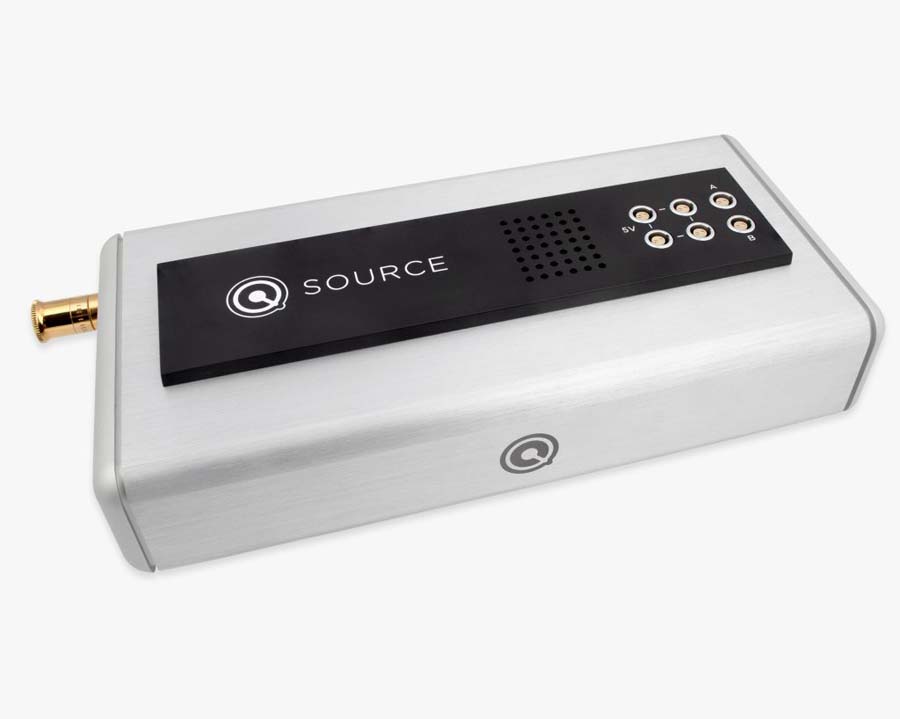
Nordost QSOURCE Linear Power Supply, $2749 and the QNET Ethernet Switch, $3199.99
This pair of products from Nordost receive a a Writers Choice Award for seriously elevating music streaming. First is the QSOURCE Linear Power Supply. Anyone who's been on the scene for a while knows the scoop on wall-warts. The best thing you can do is toss the pernicious little device and treat yourself to a linear power supply.
Even a budget LPS model will prove the point, but you'll soon find there's a steep price/performance relationship. I rode the elevator up, stopping briefly on the second floor to audition one of the affordable offerings, then continued on to the third for mid-price, where I lingered a while. Next I exited at five, where I found the Nordost QSOURCE. This unit met all my requirements excellently, plus brought a level of refinement that exceeded my expectations. I could live with this one. Yes, the price increases at each floor, but, as they say, you get what you pay for.
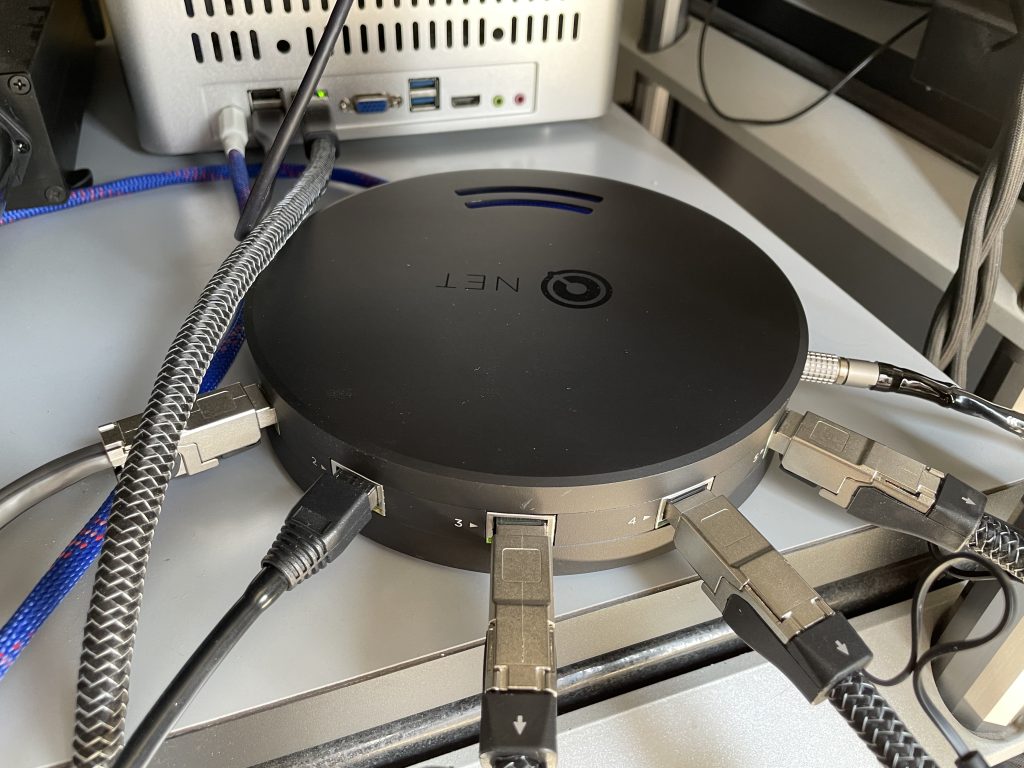
The second product catches many people off guard: the outsize role of the ethernet switch in a streaming front-end. It's the same old controversy. Skeptics will tell you a switch is a switch, you're wasting your money paying for an "audiophile" one. Well, I'm not going to argue with them. Simply try one for yourself. Depending on how revealing your system is, the difference will pop out to a greater or lesser extent.
In this instance the elevator ride began with an off-the-shelf model from Home Depot, then proceeded to a mid-level unit on two, before I ascended to the fifth floor where I found the Nordost QNET Ethernet Switch. The QNET is particularly adept at resolving atmosphere, low-level detail, and timbral finesse, in many ways matching the strengths of the QSOURCE. Both were end points in my quest and good enough that I didn't feel the need to look further.

Stage III Concepts Ckahron Interconnect, RCA $15,000 1.0 meter, XLR $16,500 1.0 meter
What gives here? I gave a Writer's Choice Award to the Medusa Speaker Cable from Stage III Concepts in 2016, the Poseidon Power Cord from the same maker in 2021, and now the Ckahron Interconnect in 2022? This is getting predictable (and habit forming, I hope).
Although impossible to pronounce (the name is an alternate spelling for Charon, the ferryman of the underworld), it joins the speaker and power cable to complete the vacuum dielectric family of Stage III's Ultimate Statement Series. Unlike the others, this one makes no claim to being the world's first to incorporate a vacuum. (Tara Labs got there when they introduced the Zero IC, back in 2000.) Still, no interconnect I've heard sounds like the Ckahron. (Just as the Poseidon power cord has a sound totally its own.) I'm tempted to say no area of performance is less than world-class in any of these wires, and they're musical to beat the band.
For deep-pocketed audiophiles in pursuit of the loftier altitudes of the Hi-end, audition is a must. The Stage III Ultimate Statement Cables might be just what you are seeking. All are desert island worthy.
Read more HERE
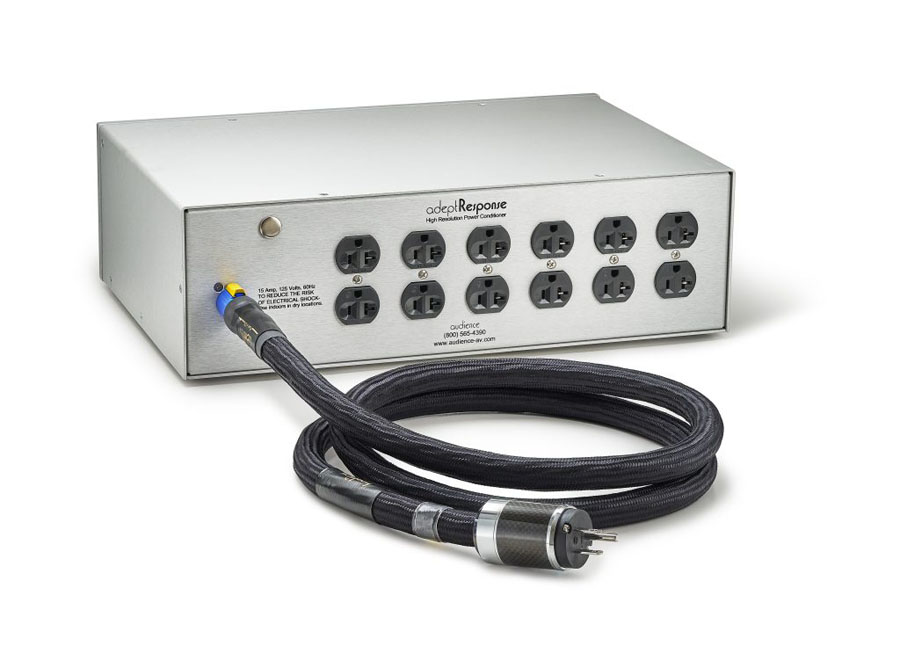
Audience aR12-T4 Power Conditioner,$11,400 including an Audience SE-i powerChord
I've had flirtations with all kinds of power conditioning—active, passive, and hybrid. Each design has notable strengths and weaknesses, but mostly the passives have done the trick for me. My current affair is with a hybrid, since the Audience adeptResponse aR12-T4 Power Conditioner made its appearance. The aR12-T4 proved equal to the pure passive I had been using in the things the passive does best. Like purity: the aR12-T4 doesn't introduce artifacts. Like fine detail: the aR12-T4 doesn't subtract information, the amount of fine detail it passes is amazing. Like natural voicing: the product has very low coloration and high fidelity to the source. And in the areas where passives are typically weak, such as dynamics, the capacitors and inductors inside the aR12-T4 were surpassing.
I find it the best all around design and that's why the adeptResponse has become my reference for the entirety of my system's AC needs. What can I say? If you can afford it, it's the best power delivery I've yet heard.
Read more HERE
Rushton Paul
Playback Designs MPD-8, $27,000
The Playback Designs MPD-8 is a music-lover's DAC. It is for the person who places priority on musical enjoyment with excellent sonics. This is because the MPD-8 works very hard to make every digital file as listenable and enjoyable as possible by eliminating ugly digital artifacts. It helps make lower resolution digital music listenable, so that many standard resolution CDs become very listenable. Indeed, this is it "super power."
But don't confuse this with glossing over detail or simply creating warm lush sounds. No, indeed. The MPD-8 is incredibly resolving. It delivers the detail and transparency that allows us to easily differentiate among instruments, to hear the rosin on the bow, to hear the vibration on the skins of the timpani, to hear deeply into the inner detail of an orchestral recording. And it's ability to reproduce dynamic swings is tremendous—not just the ability to play loud, but the more important ability to react quickly with the micro-dynamic changes that grants the similitude of life to recorded music.
Ann and I have consistently been struck by how organically "right" the MPD-8 sounds. It operates at the level of the best analog sound we've ever experienced. With the best source material the MPD-8 is simply a transportive listening experience.
Read more HERE
Mark Pearson
Dynamic Design Lotus GS Cables
My Positive Feedback Writer's Choice Awards for 2022 goes to Dynamic Design AV Cables. I had the pleasure of reviewing a full loom of Dynamic Design AV cables in my system. I had the entry level Lotus series cables and you can see my review HERE:
Below is the list of cables I received for review:
• 1.5M Lotus GS Power Cord $2000
• 1.5M Lotus Digital Power Cord $2000
• 2.0M Lotus GS Power Cord $2500
• 2.5M Lotus GS Power Cord 20A $3000
• 2.5M Lotus GS Power Cord 20A $3000
• 2.5M Lotus GS Power Cord 20A $3000
• 2.0M Lotus GS XLR Interconnects (pair) $3000
• 2.5M Lotus GS XLR (pair) $3500
• 3.0M Lotus GS XLR (pair) $4000
• 7.0M Lotus GS XLR (pair) $8000
• 8.0M Lotus AE15 RCA (pair) $4000
• 2.5M Lotus GS Speaker Cables (pair) $3500
The Dynamic Design AV cables are very quiet and dynamic sounding cables that make music sound thrilling assuming you are playing back recordings that have good dynamic range.
The bottom end in my system has never had the depth of power that the Dynamic Design AV cables brought to the table. As my review points out, bass isn't the only area where Dynamic Design AV cables excel.
Lastly, the cables are easy to work with and the power cables fit very snugly without strain which means they don't try and detach themselves from the wall or the back of your gear. If you have an opportunity to hear Dynamic Design AV cables in your system, I wouldn't pass it up.
Read more HERE
Greg Weaver
The KRONOS Discovery Resonance Suppression Tonearm, $24,000
Advancing upon the technologies KRONOS founder and designer Louis Desjardins developed to realize the sui generis Discovery turntable in the fall of 2021, this past spring he released a new, equally singular, game-changing tonearm. His "Resonance Suppression" approach is an utterly new, unique, patent-pending technology, not merely some clever or catchy gimmick or marketing strategy. With this tonearm technology, Louis has found a way to create a rigid and lightweight, yet not solid, pickup arm, in which mechanical waves are consistently interrupted, preventing them from propagating and subsequently reinforcing and accumulating.
The resultant sonic rewards are starkly apparent, beginning with the monumental reduction of what we have always called "groove rush." The lowest octaves are more refined, with better-delineated extension, and a more faithful sense of speed and texture. As with the lowest frequency improvements, the entire musical spectrum receives a substantial advance in its ability to portray density of color, overall tonal neutrality, as well as midrange and upper midrange liveliness, allowing previously unrealized and remarkably subtle inflections in instrumental voicing, tonality, and texture.
These more nuanced inflections not only enrich timbre and tonal correctness, but afford an amazing sense of focus, specificity, and spatial rendering, and its ability to portray authentic scale, with both large-scale macrodynamic expressiveness and small-scale microdynamic eloquence is unparalleled. The Discovery RS tonearm experience epitomizes the premise that you can't always recognize what sonic debris you're listening to until it has been removed.
This new KRONOS Discovery RS tonearm presents a more uncolored, articulate, concise view into recordings than any other tonearm in my experience, at any price!
Read more HERE
Robert Youman
Aavik I-580 Integrated Amplifier, $25,200
The I-580 Integrated Amplifier is a Class D design rated at 300 watts RMS at 8 ohms and 600 watts RMS at 4 ohms. Distortion is rated at a remarkable 0.006% THD+N at 100 watts. The I-580 weighs in at 23 lbs with the following dimensions: 15 3/4" x 15 1/8" x 4 1/64". From both an aesthetic and ergonomic perspective, the I-580 is one of the finest looking and most beautifully laid out Integrated Amplifiers that I have reviewed in the last several years.
Beyond a creative new approach to Class D design via UMAC™ amplifier technology, the key driving force for the I-580 is clearly an all-out assault on reducing noise levels and providing additional resonance control. These noise cancellation technologies include Active Tesla Coils, Active Square Tesla Coils, Anti-Aerial Resonance Coils and Dither circuitry. These are all important, if not key differentiators for this product line. Please see the Audio Group Denmark website for additional detailed information on these technologies.
The end result of all of this superb design and engineering, is a product with outstanding sound quality. There is a level of detail and palpability that is quite compelling! This, without the typical edge and fatigue when such detail is usually presented. Highs and mids had a natural level of sweetness and purity, but there was also all the attack and clarity that you could ever ask for. As typical with a Class D design, bass performance was outstanding with plenty of bottom end grunt and visceral impact. From top to bottom, Aavik has really hit one out of the ball park with the I-580 Integrated Amplifier! Congrats to the entire Aavik team!
Read more HERE
Saturday Night In San Francisco, Al Di Meola, John McLaughlin, Paco DeLucia (IMPEX Records - 33 RPM)
This is an outstanding release that should be a strong consideration for all vinyl fans and record collectors—regardless of your favorite genre! From a performance, recording and production perspective, when you put together a team from IMPEX Records, Elusive Disc, Bernie Grundman Mastering, Stoughten Printing, RTI and last but not least Producer Al Di Meola himself, what you get is an absolute classic. The track record and reputation proceeds for all of these players. The results are wonderful!
Recorded on the Saturday night of the same weekend in 1980 as the iconic and much praised release Friday Night in San Francisco, some may just consider this as a follow up or complementary effort. That would be a big mistake! This recording can stand on its own and deserves its own benchmark and legacy. Di Meola, McLaughlin and DeLucia were some of the leading magazine poll candidates back in the day for Jazz, Rock and Flamenco guitar. Individually and collectively on this recording, this all-star cast on one stage verifies all the accolades and rankings. The talent and musicianship just explodes off the vinyl for all three.
Bernie Grundman has stepped up his game on this one. I have seen several of his interviews where he claims that his mastering lab continues to upgrade the available mastering tools and components whenever possible—a never ending commitment to excellence. The results here are easy to hear. Fasten your seat belts as the dynamic headroom and lifelike presence will have you giggling throughout. There is also a very natural harmonic structure and tone to the instruments that in some ways exceeds the multiple audiophile Friday Night pressings that have been rolled out over the years.
Congrats to Abey Fonn of IMPEX Records and the entire team on a job well done! Saturday Night In San Francisco will surely make this LP a leading candidate for several of the highest industry awards in 2022!
Read more HERE
John Zurek
Gingko Audio Vibration Control Solutions (VCS) Toolkit, $599
As I write this I'm looking back through the reviews I wrote for the Gingko Acoustic Resonance Clarifier (ARCH) HERE, the Gingko Arch Platform HERE, and the VCS Toolkit Part 1 HERE, and Part 2 HERE.
In the past few years I witnessed the evolution of this family of vibration control products from Vinh Vu of Gingko Audio. The VCS toolkit has two versions that includes Cloud 22 bases, mini ARCHs, and Speaker/Equipment ARCHs. No need to rehash all the details here, but suffice to say that I still use all these products in my system. From the first time I helped a friend put the prototype ARCHs under a pair of Emerald Physics speakers (we were surprised with the improvement to say the least) I knew there was something special in this line of accessories. In a sentence, they introduced improved clarity and simply made me want to listen to more music through my system. All the Gingko products in the above reviews contributed to that. In my room the stars of this line were the Speaker ARCHs, the Cloud22 bases, and the Cloud22 Wool Balls.
I don't think I would even consider a pair of stand-mounted or floorstanding speakers without the speaker ARCHs directly attached to the stands or speaker cabinets going forward. The improvement I experienced installing the ARCHs directly into my speakers made them cleaner and purer.
The Cloud22 bases were a total surprise. They simply trounced some much more expensive vibration control devices I'd been using on my tube monoblocks. That said, I expected a boost in performance for tube amps, but I never expected the improvement they gave my solid state amp. What they did was subtle, but a revelation.
Although not technically part of the VCS toolkit, the Cloud22 wool balls were a standout. When I switched out the original rubber balls on my Cloud 9 turntable platform for the Cloud22 wool balls it was again a revelation. The wool balls allowed the vinyl midrange to shine through like nothing I've heard before, and they propelled the music forward such that you want to dance in your listening chair.
I'm not trying to minimize the other members of Gingko's Vibration Control products, but if you want all the details read the reviews in the above links.
Suffice to say I'm impressed with the line. I feel the investment return on your hard-earned audio dollars is very high, and the Gingko products have played a significant role in my enhanced musical enjoyment for the past couple of years.




